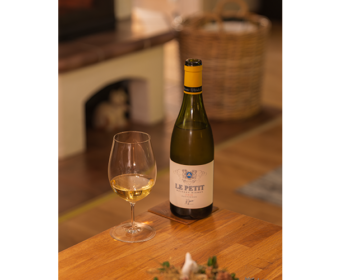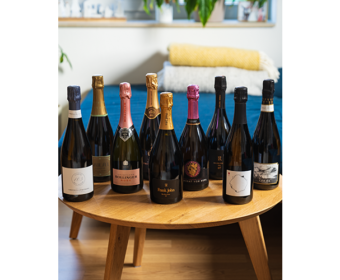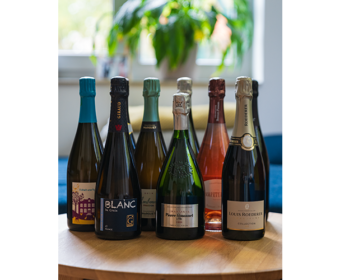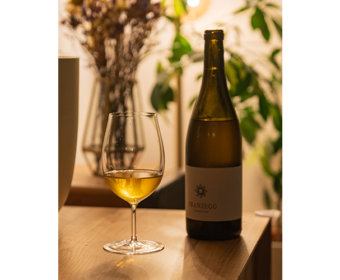Unbottled – Sauvignon Blanc Tasting

Sauvignon Blanc is the favourite grape variety of my mother. So, we did a small tasting to explore the different aspects. With the seven wines we tried, I tried to show where Sauvignon Blanc comes from, what the most famous expressions are and what unusual bottlings can be found. All in all, it was a very interesting evening.
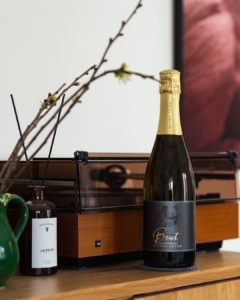
As an aperitif, we started with a sparkling wine from Oliver Zeter. The Sauvignon Blanc Brut comes from different vineyards in the Palatine region. After the gentle pressing the fermentation takes place in stainless steel tanks. The sparkling wine then spends 18 months on the yeast in the bottle.
Crowd pleaser
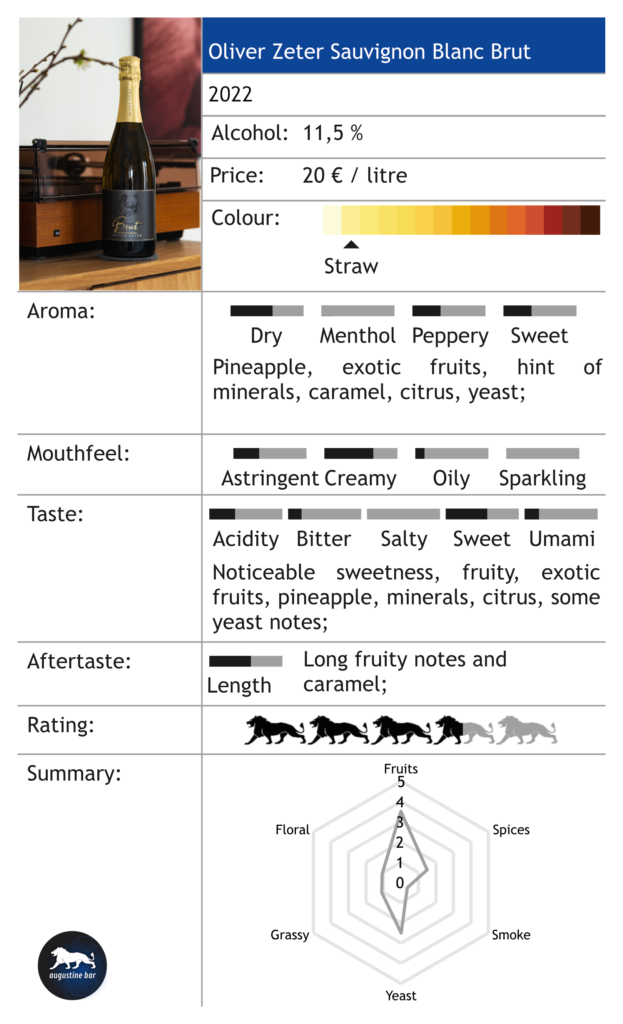
The Oliver Zeter Sauvignon Blanc Brut is a great crowd pleaser. You get some exotic fruit notes typical of Sauvignon Blanc. There is also a noticeable sweetness, but this should be well received if you are not a fan of Zero Dosage. For me the Dosage could be quite a bit lower.
Not a Sauvignon Blanc
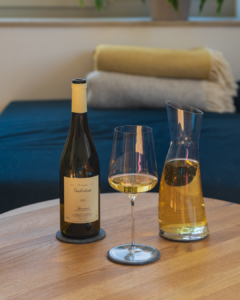
Since Sauvignon Blanc is a natural hybrid of Chenin Blanc and Traminer, I also included a bottle of this grape variety in the tasting. The Domaine Guiberteau Saumur Blanc is the entry level wine of the vineyard, but already sought after. After selective, manual harvest, the wine is slightly pre-clarified before the spontaneous fermentation. The ageing is done in barriques from the Tronçais forest.

Directly after opening the Saumur Blanc shows some fruity characteristics, but after some contact with air, the minerality and acidity of the wine come to the front. You get flint, matchsticks, Granny Smith apples as well as overripe apples and pears. Apart from that, the wine does pair very well with sushi..
Not a Sauvignon Blanc II
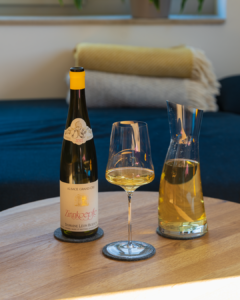
Obviously, I had to include a Traminer in the tasting, too. In this case, I went for the Léon Boesch Gewuerztraminer Zinnkoepfle. This Grand Cru wine ferments and ages in large oak casks after whole cluster pressing. After 10 to 12 months on the yeast, the wine is bottled without fining or filtration.
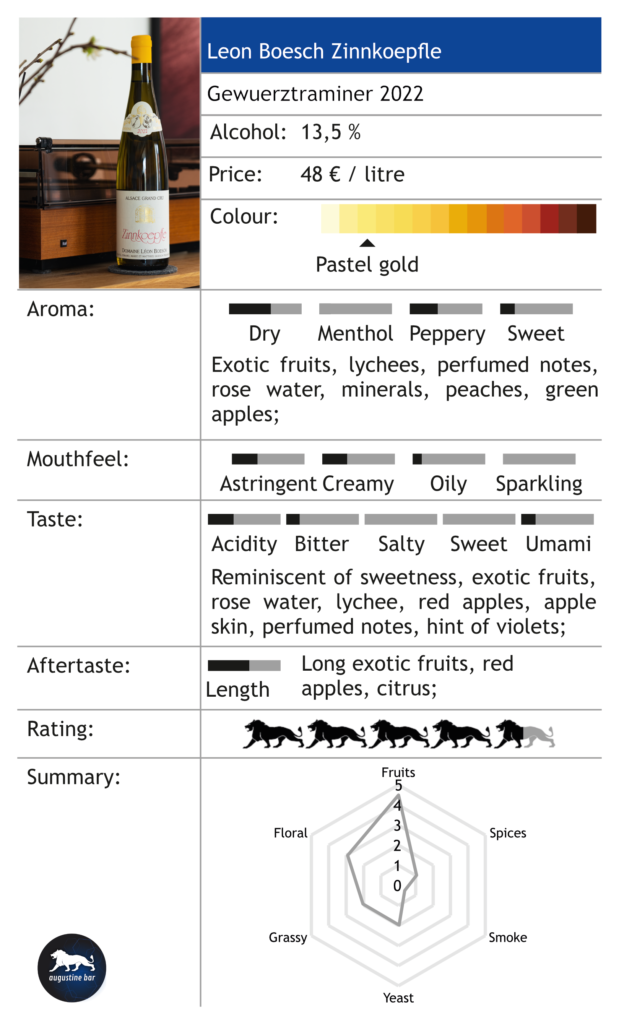
The Léon Boesch Zinnkoepfle is a prime example of a dry Gewuerztraminer: You can taste exotic fruits like lychees with perfumed notes reminding me of rose water. You might almost think the wine has some sweetness, which it does not, because of its fruity complexity. I also found red apples, apple skins as well as some violets in the taste.
Smoky goodness
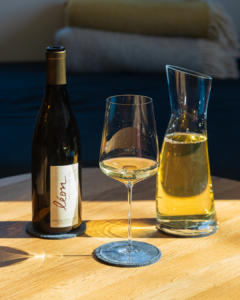
On with some real Sauvignon Blanc from one of France’s iconic growing regions: The Jonathan Pabiot Leon comes from Pouilly sur Loire and ages for eight to twelve months in stainless steel after spontaneous fermentation depending on the pH-level.

The Léon Pouilly-Fumé really needs to breath for a while. Afterwards, you are rewarded with pineapples, some umami notes, reminiscent of yellow bell peppers, chalk and a hint of grass. In the taste, green pears come to the front along with green apples and peaches. All tasters agreed that this was the best wine of the evening.
And now… chalk

Apart from Pouilly-Fumé, Sancerre is the second renown region at the Loire for Sauvignon Blanc. I chose the Domaine Fouassier Les Romains for the tasting. The grapes come from 45-year-old wines and after spontaneouse fermentation the wine spends a year on the lees in a concrete egg. Next, Fouassier transfer the wine to a stainless steel tank where it ages for another year.

There were certain similarities to the Léon, but if you took your time you noticed also quite a lot of different notes. The exotic fruits receded a bit and instead yellow fruits took the front. In addition to a certain peach flavour you could taste green apples, grassy flavours and chalk. The Sancerre delivered even more Terroir than the wine before and came in as a close second in the tasting.
Almost orange
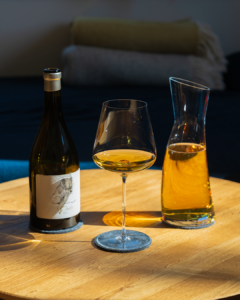
Next things got really interesting, because I chose the Oliver Zeter Sauvignon Blanc Baer Grand Fumé 2016 as the second-to-last wine. The grapes for the wine spend some time on their skins with a part being mash fermented. Oliver Zeter ages the wine for 18 months on the yeasts, a part in used 500 l Tonneaus and another part in a 670 l concrete egg.
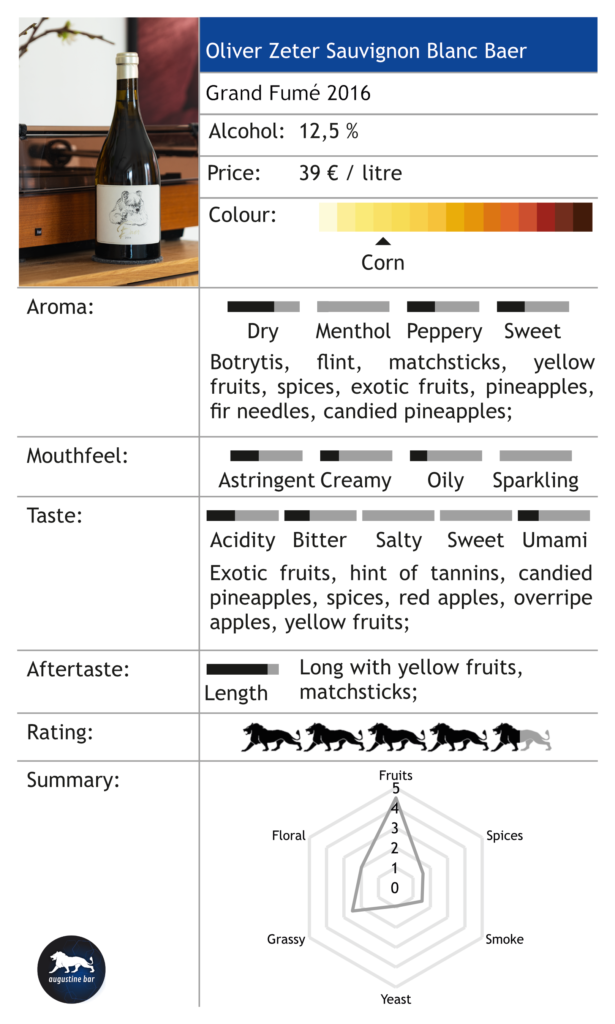
Even the yellow golden colour showed that this wine was different from the others. On the one hand, the Sauvignon Blanc Baer is half way towards an orange wine and on the other hand it also had some ageing notes. The aroma reminded me a bit of Botrytis, but also of flint and matchsticks. Next, yellow fruits, spices and candied pineapple became noticeable. This is a very interesting Sauvignon Blanc expression, but at the same time not an easy sipper.
Definitely orange

Last but not least, I went for a natural, orange wine from Styria another renown European Sauvginon Blanc growing region. The grapes for the Maria & Sepp Muster Graefin spend three weeks on the mash, only partially destemmed. After the gentle pressing and sponatneous fermentation, the Graefin ages for 22 months in large oak casks. In the end, the Musters bottle the wine cloudy without filtration.
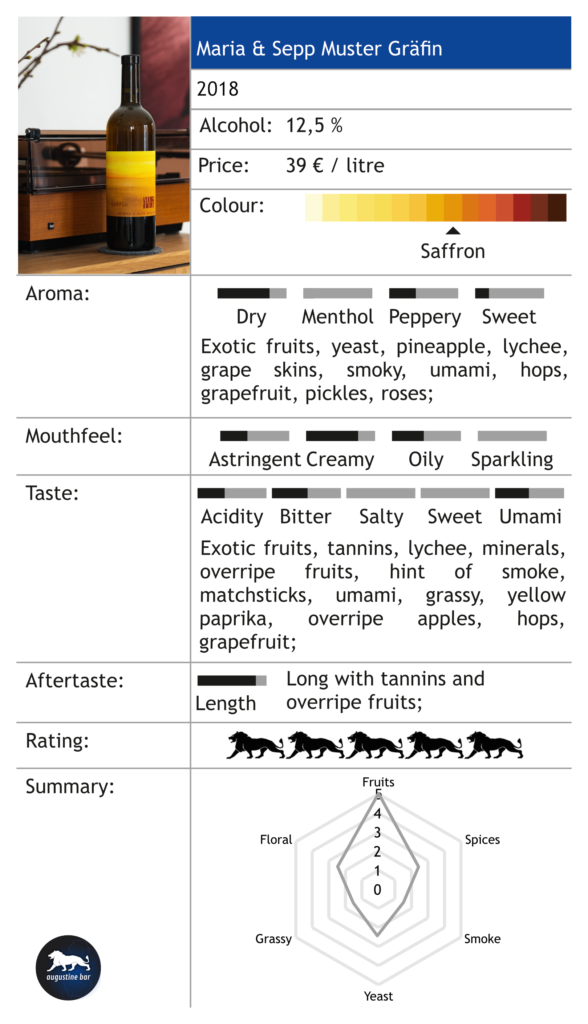
As you might expect, this orange wine comes across as wild. Yet, when you tried a fair share of natural and / or orange wines, you can appreciate the complexity with a certain “grip” from the tannins. Even after being decanted for a while, the flavour changes with every sip. The spectrum spans exotic fruits such as pineapple and lychees, smoke, hops, grapefruit and umami notes such as a touch of sour cucumber. I enjoyed this one very much, but this was a bit too much for my parents…

